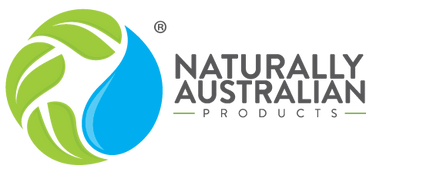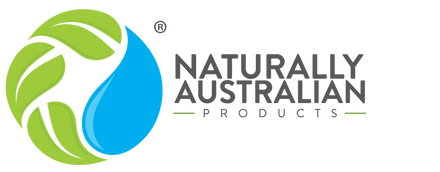
Terroir of Tea Tree Oil
What origin means for the safety, efficacy and future of Tea Tree (Melaleuca alternifolia) Essential Oil
Hold on ….
Before you get any wild ideas, we’re not recommending a Tea Tree Oil tasting. Although it’s been said that Tea Tree leaves were traditionally used in healing teas and even in beer by the Indigenous Bundjalung people, the oil is actually toxic if swallowed.
…Instead, we’re talking about why Tea Tree’s native environment is so integral to the quality of the oil. Similar to how wine’s various flavour profiles differ depending on the location the grapes were grown, Tea Tree’s unique phyto-compounds have evolved based on centuries of adapting to its native environment. From soil and climate to location and farming practices, we reveal why these variables are so important to sourcing safe, pure and effective, high-quality Tea Tree Oil.
Is your “100% Pure Australian Tea Tree Oil” authentically Australian?

Although Australia manufactures 80% of all Tea Tree Oil around the globe,1 other countries such as China, India and South Africa also produce Tea Tree Oil that’s therapeutic value, safety or efficacy remains to be confirmed. Or worse, other adulterated oils can be irritating, resulting in dermatitis, dandruff or other reactions. Although a lot of these non-Australian-grown oils are typically much cheaper, they ultimately come with a cost that not only extends to the consumer, but to brands recalling product, which ultimately affects the entire Tea Tree industry as uncertain consumers demand less.
When Melaleuca alternifolia is grown outside of its native environment, it requires more synthetic agricultural fertilizers and inputs, which ultimately affects the resulting oil and its molecular composition.2 Unlike the heavily regulated Australian Tea Tree Oil industry, a number of these imitation oils are not tested like Australian oils are, and may actually be by-products of other distillations, industrial waste, synthetically made in labs, or oils of entirely different species (i.e. Pine, Eucalyptus, Camphor).
There are two standards that require certain levels of 15 of the oil’s components - the International Standard for Oil of Melaleuca, Terpinen-4-ol type (ISO 4730) and the Australian Standard for Oil of Melaleuca, terpinen-4-ol type (AS 2782-1997). Both state that the oil must have more than 30% terpinen-4-ol and less than 15% cineole.3 However, many inauthentic oils will be standardized with synthetic compounds to meet the required levels of these 15 compounds – one of the many reasons why traceability is so important is sourcing natural, organic Tea Tree Oil. (Image Source: Rural Industries Research and Development Corporation. The Effectiveness and Safety of Australian Tea Tree Oil. 2007)
Healing Oil from “Healing Ground”

We at Naturally Australian Products manufacture our Organic Tea Tree Oil from our own certified organic 2,147 acre Jenbrook Farm in Bungawalbin Valley of New South Wales, which aptly translates to ‘healing ground’.4 Its acidic clay loam soil and warm climate have nurtured the evergreen shrub for centuries, earning the designation as the “birthplace of the Melaleuca alternifolia species.”
If you’re familiar with various Lavender Essential Oils, you’ll notice the Bulgarian Lavender has a more herbaceous scent, while French lavender has lighter floral notes and Tasmanian has a woody, balsamic undertone. In this same way, Tea Tree grown in other parts of the world have different profiles and varying volatile compounds that produce different scents.
(Image Source: Rural Industries Research and Development Corp)
Request a Sample or Data Sheet for NAP's 100% Australian Certified Organic Tea Tree Oil
Providence Preserves the Entourage for Future Plant-Based Solutions

With the globalization of Tea Tree Oil, not only is this species’ purity and integrity in jeopardy, but we risk losing data and understanding that we’ve yet to uncover. Tea Tree is one of the most researched botanicals, comprised of more than 200+ unique phyto-compounds. Additionally, Tea Tree’s genome is “more than four times the size of the coffee plant genome and much larger than most sequenced plant species.”5
Although many studies have identified the individual compounds and their benefits, there is much to reveal about how the unique synergy and complexity of these compounds (the entourage) produce superior results to synthetic, isolated compounds. The main constituent of Tea Tree Oil, terpinene-4-ol, is not nearly as effective when isolated, which presents the theory that 100% pure Tea Tree Oil may prevent antibiotic resistance, which some pathogens like MRSA have begun to show to the isolated compound.6
Tea Tree’s range of antiseptic, anti-bacterial, anti-fungal, anti-inflammatory and anti-viral properties are not an accident, but a result of nature’s genius, and thus when we remove the plant from its natural environment or try to mimic it in a lab, we lose so much of the science, or “magic”, that makes it a miracle botanical.
Demand Growing for Australian Tea Tree
Tea tree is a unique tree for a multitude of reasons, but the fact that it is almost entirely grown for its oil is testament to the value of this species for the health and wellness industries. So many essential oils are processed from other industries’ by-products (e.g., orange peels from the juice industry). Tea tree oil has such high demand from the cosmetic industry due to its large-scale application in the production of shampoos, conditioners, skin care, face lotions, mouthwash, body lotions, shower gels, cleansing soap, deodorants, hand wash sanitizers, creams and so much more.
Now more than ever, the demand for natural products is exponentially growing due to a heightened awareness of hygiene and new perspectives on beauty. More and more people are seeing beauty as an investment in themselves – their appearance and how they feel. With this more holistic perspective, natural ingredients like Tea Tree Oil are popping up in all kinds of products for a range of soothing solutions – for skin, hair, body or scent.
Maintaining Authenticity to Increase Yield and Conserve Medicinal Quality

As Tea Tree growers look to improve yield to meet growing demand, researchers are selecting variants of Tea Tree with higher yields of essential oil and they have narrowed down a few genes that can be selected for. That’s why it’s so important to conserve the genetic variability in the species – to ensure the future of the industry and more affordable, natural options.7
NAP’s farm director, Bryan Easson, explains why preserving the authentic Australian Tea Tree species is so important, “The major issue or concern is maintaining the true botanical species and its medicinal activity. Given our species (Melaleuca alternifolia) evolved from another Melaleuca species over centuries to survive our region’s hostile environment, genetically modified species can pose a danger to disrupting the integrity of our farm. If plantations adjacent to our native species cross pollinate with ours, this could destroy what “Mother Nature” has provided for humanity over 36,000+ years.”
(Image Source: Allied Market Research. 2019)
Organic Tea Tree: From The Earth. For the Earth.
Currently, it is not an Australian legislative requirement for plant products made with genetically modified material to be labeled as such. The best way to know if your product is GM free is to purchase certified organic, which forbids the use of GM ingredients.
Our group of organizations that comply with Organic certifications maintain farming practices that emulate nature. However, foreign weeds are a major problem, followed by insect invasion. Whilst Tea Tree has a ‘built-in’ mechanism for pest resistance, crop loss due to pests influences the yield of essential oil, and although there are approved chemicals for ‘Organic’ farming, we use mechanical soil disturbance for weed control (and our cows do a great job of keeping the underbrush clear). Our Jenbrook plantation also spreads the spent tea tree mulch (distillation bio-mass) into the rows, followed by light discing. This natural farming technique improves flow of rain water and nutrients to penetrate to feeding root systems.
Support Australian sustainable farmers whose interest extends beyond the Tea Tree species, to the entire interconnected ecosystem where they work – their livelihood. Choosing Organic Tea Tree Oil by NAP guarantees you and your customers of a safe, pure, whole product of the highest quality.
If you don’t have 100% trust in your supplier, don’t have the proof to back their traceability claims or Code of Practice (CoP), then CONTACT US so we can help source authentic ingredients that you can be SURE of.
TEA TREE AUTHENTICITY ASSESSMENT GUIDE
| VARIABLE | What to ask. . . |
| Compounds | Does the oil follow either ISO 4730-2017 or AS 2782-1997, meeting required compound levels? Is the oil natural or has it been synthetically standardized? |
| Species | Are you sure it is 100% from Melaleuca alternifolia? Or has it been adulterated by diluted with different Species like Pine, Eucalyptus, or Camphor oils? |
| Origin | Is your oil completely from and of the land? If so, is it from the native environment that the species as adapted to? Or, was it recreated in a lab or processed from by-products? |
| Growing Practices | How was the Tea Tree grown and harvested? Is it certified organic? Has it been treated with chemical fertilizers or pesticides? How long is the distillation? Typically, a longer distillation of Tea Tree Oil with result in a more compound-rich oil. |
| Manufacturing Process | How long is the distillation? Typically a longer distillation of Tea Tree Oil with result in a more compound-rich oil. |
| Certifications | In addition to ISO4730-2017 or AS 278201997, has the manufacturer provided additional testing, i.e. Chiral Purity Testing, or have they followed certain standards, such as the Australian Tea Tree Oil Industry Association Code of Practice (CoP)? |
Sources:
1. https://www.globenewswire.com/news-release/2019/08/28/1907598/0/en/Tea-Tree-Oil-Market-Nears-60-Million-by-2025-Comprehensive-Analysis-on-the-Drivers-Restraints-and-Opportunities-of-the-Market.html
2. https://www.cosmeticsdesign.com/Article/2013/10/22/Synthetic-tea-tree-oil-puts-both-cosmetics-consumers-and-genuine-suppliers-at-risk-producer-claims
3. Rural Industries Research and Development Corp. ATTIA. Effectiveness and Safety of Australian Tea Tree Oil. 2007. https://www.agrifutures.com.au/wp-content/uploads/publications/07-143.pdf
4. https://teatree.org.au/teatree_about.php
5. https://www.sciencedaily.com/releases/2017/05/170501141648.htm
6. ATTIA. Pure Australian Tea Tree Oil Offers Significant Advantages over Adulterated Oils Masquerading as Tea Tree. 2017.
7. https://www.researchgate.net/publication/265251139_Genetic_tools_for_improving_Tea_Tree_Oils

